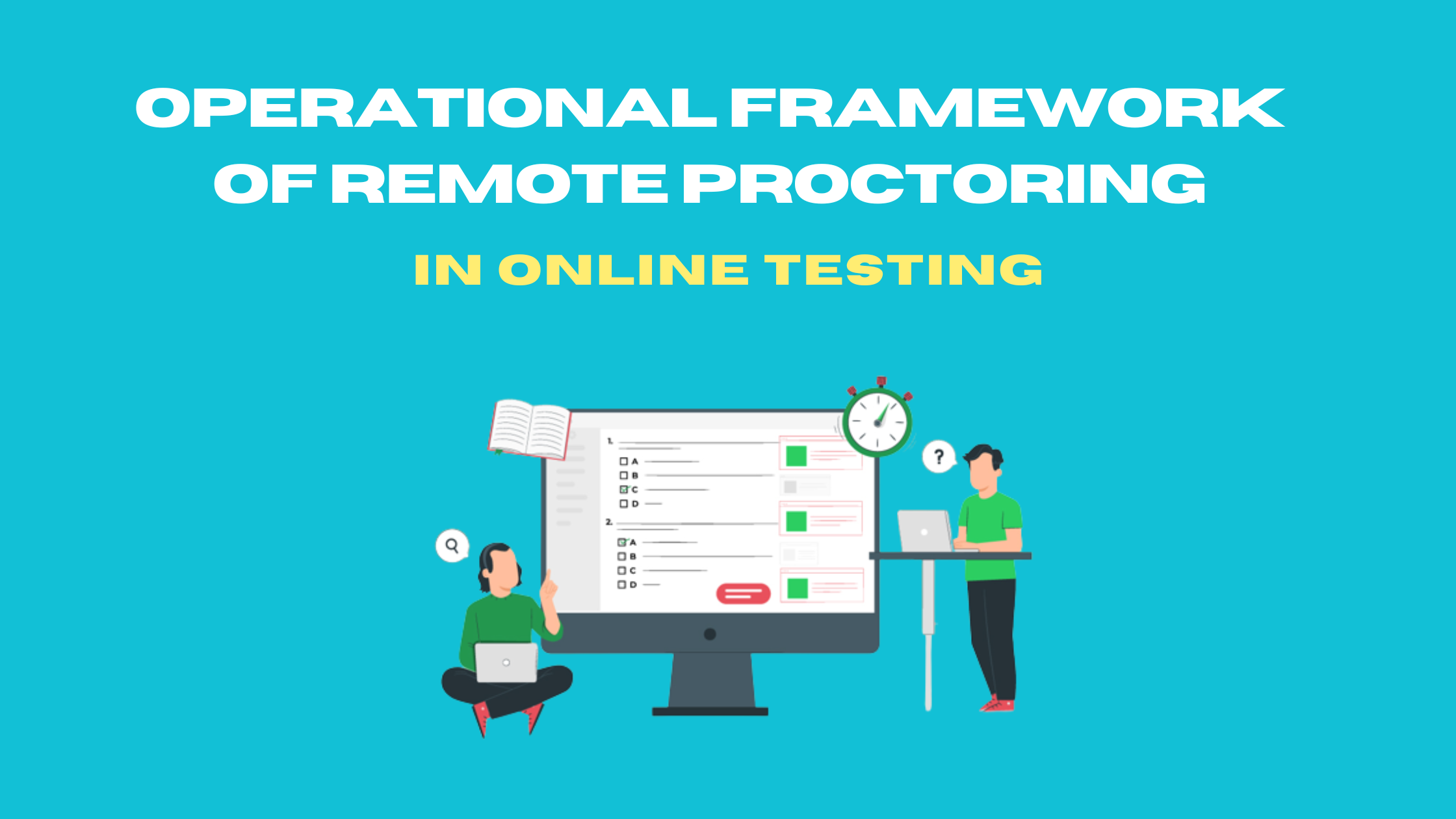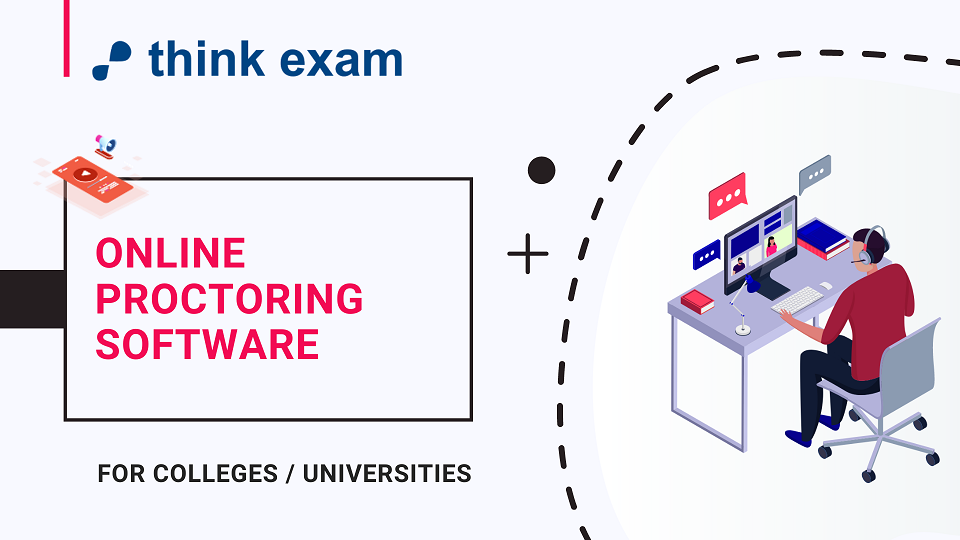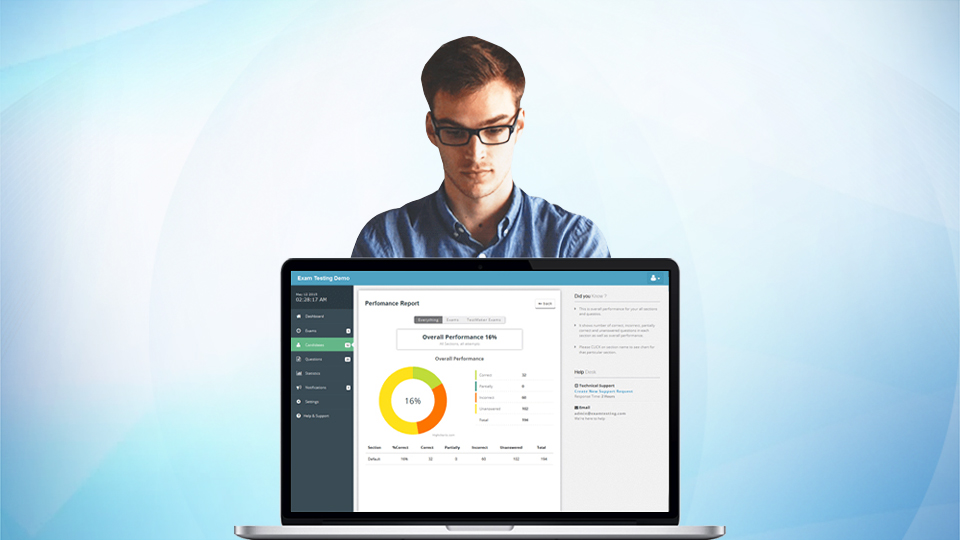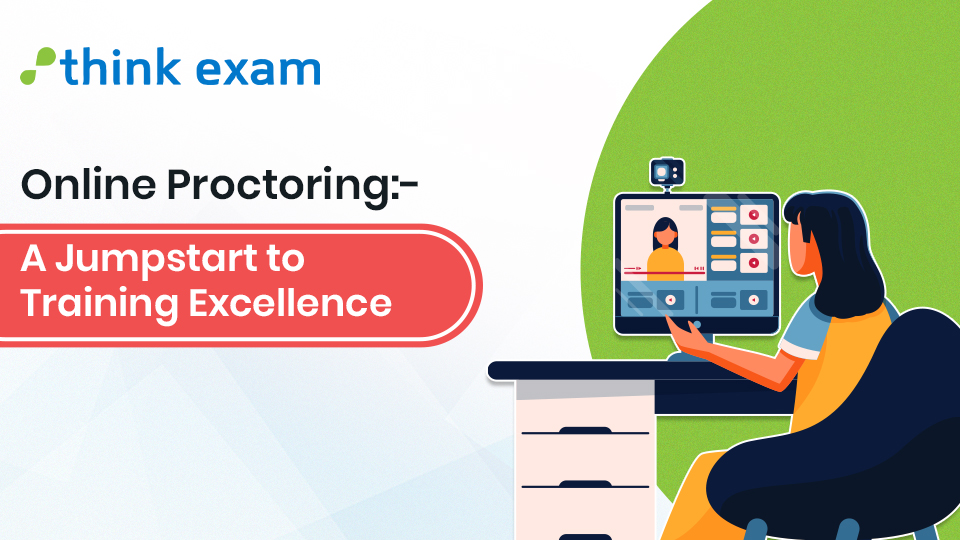In today’s digital age, online education has become increasingly popular, offering students the flexibility to learn from the comfort of their homes. With this shift, the need for secure and reliable methods of assessment has grown exponentially. This is where remote proctoring, also known as online proctoring, plays a pivotal role in maintaining the integrity of online tests.
In this comprehensive guide, we will delve into the intricacies of remote proctoring and explore how it works to ensure the fairness and authenticity of online assessments.
In today’s digital age, online education has become increasingly popular, offering students the flexibility to learn from the comfort of their homes. With this shift, the need for secure and reliable methods of assessment has grown exponentially. This is where remote proctoring, also known as online proctoring, plays a pivotal role in maintaining the integrity of online tests.
In this comprehensive guide, we will delve into the intricacies of remote proctoring and explore how it works to ensure the fairness and authenticity of online assessments.
Understanding Remote Proctoring
Remote proctoring is a technology-driven solution designed to monitor and authenticate online test-takers from a remote location. It leverages a combination of video and audio recording, AI algorithms, and biometric data to create a secure testing environment that mirrors the supervision of an in-person proctor.
The Key Components of Remote Proctoring
- Identity Verification: At the beginning of an online test, test-takers are required to verify their identity using a government-issued ID, facial recognition, or other biometric authentication methods. This step ensures that the person taking the test is indeed the registered student.
- Environment Check: Remote proctoring software scans the test-taker’s surroundings to ensure there are no unauthorised materials or individuals present. Any suspicious activity is flagged for review.
- Live Video Monitoring: Throughout the test, a live proctor remotely observes the test-taker via webcam, ensuring they do not engage in any cheating behaviours.
- Screen Recording: The test-taker’s screen activity is continuously recorded, allowing proctors to review the footage for any suspicious actions, such as opening unauthorised websites or applications.
- Audio Monitoring: The software captures audio to detect any communication or conversation during the test, which may indicate cheating.
- AI-Based Behavior Analysis: Advanced AI algorithms analyse the test-taker’s behaviour, including eye movements, keystrokes, and mouse activity, to identify any irregularities that may suggest cheating.
The Workflow of Remote Proctoring
When a student begins an online test with remote proctoring enabled, the following steps are typically followed:
- Authentication: The student verifies their identity through the prescribed method.
- Environment Check: The software scans the student’s surroundings to ensure compliance with test regulations.
- Test Monitoring: A live proctor watches the student through their webcam while simultaneously monitoring their screen and audio.
- AI Analysis: The AI system continuously analyses the student’s behaviour for signs of cheating.
- Flagging Suspicious Activity: If any suspicious activity is detected, it is flagged for review by the proctor.
- Post-Test Review: After the test is completed, the proctor reviews the flagged segments of the recording to make a determination about the integrity of the test.
- Report Generation: A detailed report is generated, highlighting any incidents of suspicious behaviour or potential cheating.
Benefits of Remote Proctoring
- Security: Remote proctoring ensures the security and integrity of online tests, reducing the risk of cheating.
- Convenience: Students can take tests from anywhere, eliminating the need for physical test centres.
- Cost-Efficiency: Institutions can save on the costs associated with traditional in-person proctoring.
- Scalability: Remote proctoring can be easily scaled to accommodate a large number of test-takers simultaneously.
- Accuracy: Advanced AI algorithms enhance the accuracy of identifying suspicious behaviour.
Challenges and Considerations in Remote Proctoring
While remote proctoring offers numerous advantages, it also presents some challenges and considerations:
- Privacy Concerns: Some students may have concerns about their privacy when being monitored during tests. Institutions must strike a balance between security and privacy.
- Technical Issues: Technical glitches or network problems can disrupt the testing process. Institutions should have contingency plans in place.
- False Positives: The AI algorithms used in remote proctoring may occasionally flag legitimate behavior as suspicious. Human proctors need to review these cases carefully.
- Accessibility: Institutions must ensure that remote proctoring accommodates students with disabilities and provides equal access to online assessments.
- Training: Proctors need adequate training to effectively monitor and assess online tests.
Future Trends in Remote Proctoring
As technology continues to advance, remote proctoring is likely to evolve as well. Some future trends to watch for include:
- Biometric Authentication: One of the most promising trends is the advancement of biometric authentication methods. Beyond traditional facial recognition, we can anticipate the integration of fingerprint and voice recognition technologies. This heightened level of biometric verification will further bolster the integrity of online tests, making it exceedingly difficult for impostors to gain access.
- AI Advancements: The relentless progress of artificial intelligence promises more sophisticated and accurate cheating detection mechanisms. Future AI algorithms will possess the ability to discern even subtle signs of dishonesty, making it increasingly challenging for test-takers to engage in unauthorised activities.
- Virtual Proctoring: Virtual proctoring is expected to undergo a transformation, becoming more immersive and realistic. This evolution will aim to replicate the in-person proctoring experience, offering a comprehensive and immersive monitoring environment that leaves little room for deception.
- Blockchain Integration: Blockchain technology is poised to revolutionise the way test results and proctoring data are stored and verified. By leveraging the immutability and transparency of blockchain, institutions can enhance the security and credibility of their online testing processes, ensuring that results are tamper-proof and trustworthy.
In conclusion, remote proctoring, also known as online proctoring, has revolutionised the way online tests are conducted. It employs a combination of identity verification, live monitoring, AI analysis, and behavioural scrutiny to ensure the security and integrity of online assessments. As online education continues to grow, remote proctoring will play an indispensable role in maintaining the credibility of online testing environments, giving both institutions and students the confidence they need in the digital learning landscape. With the ever-evolving technology landscape, the future of remote proctoring holds exciting possibilities for even more robust and secure online assessments. As institutions and educators continue to adapt to the changing educational landscape, remote proctoring will remain a cornerstone of ensuring fair and authentic assessments in the online learning environment.




